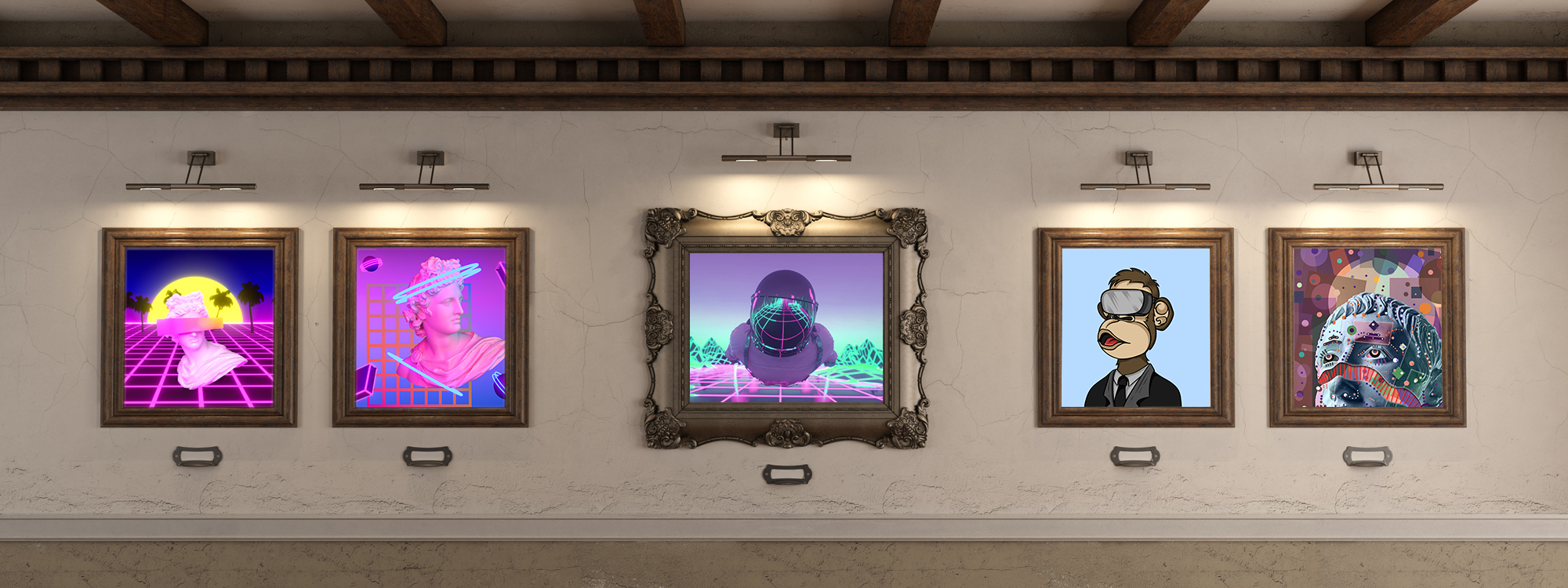“In front of a work of art, it is important to keep silent as in the presence of a prince: to wait to know if one should speak and what one should say, and never to speak first. Otherwise, one would run the risk of hearing only one’s own voice. ”
The World as Will and Representation
“Vor ein Bild hat jeder sich hinzustellen wie vor einen Fürsten, abwartend ob und was es zu ihm sprechen werde ; und, wie jenen, auch dieses nicht selbst anzureden : denn da würde er nur sich selbst vernehmen.”
Die Welt als Wille und Vorstellung
― ARTHUR SCHOPENHAUER
(1788-1860)
We refer you below to section 3. Definitions and to the CRYPTOAST article:
What is a non-fungible token (NFT)? – Definition and examples
Read : How to estimate the price of an NFT?
Let us simply consider fungibility here. In law, a fungible thing is a good that cannot be individualized. These include foodstuffs, where a carrot can be exchanged for another carrot. On the other hand, non-fungible things have their own characteristics which cannot be exchanged between them. The typical example is the work of art.
 These two bitcoins are identical,
These two bitcoins are identical,
they are completely interchangeable in their use.
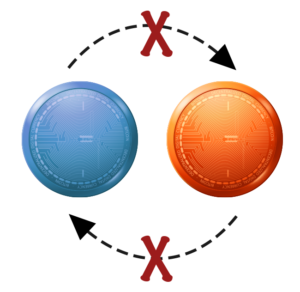 These two tokens are different,
These two tokens are different,
each will have its own use and value.
Read: NFT Month – Chapter I : What is an NFT ?
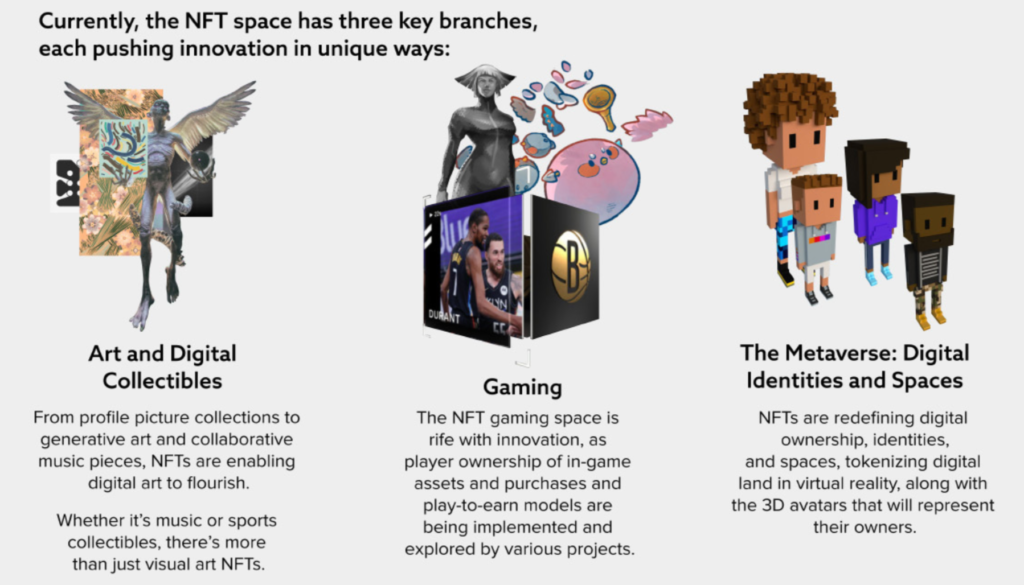 Excerpt from: What are NFTs? Mapping the NFT Ecosystem
Excerpt from: What are NFTs? Mapping the NFT Ecosystem
Read also: What regulation and taxation for non-fungible tokens (NFT)?
Excerpt from OpenSea’s Terms and Conditions:“Crypto Assets” refers to unique non-fungible tokens, implemented on the Ethereum blockchain (the “Ethereum Platform”) using smart contracts, including without limitation Ethmoji, CryptoKitties, CryptoCelebrities, and CryptoPunks..
If in the past, the status ofwork of art could still be left to the appreciation of experts or magistrates, it seems to us that in 2022, it is the PUBLIC made accessible via the new information technologies (internet, social networks, instant messengers,…) which alone decides on this status and the advantages, notably monetary (sometimes unequalled by “old” works of art), which are linked to it.
The NFTsare thus a unique opportunity, unequalled in the history of humanity, to democratize art and make it instantly and globally available to anyone connected to the “web”.
If the internet already allowed to give access to knowledge and art to everyone, it did not yet create an “instantaneous and planetary digital market” of art where everyone can buy and resell works of art, for the most part of a new format and a new style that influences in turn contemporary artists.
 Some artists duplicate their works in NFTs, then keep or destroy the physical work, which opens the existence to two possible twin works (physical and digital) while others create directly digital works that will never have a physical existence.
Some artists duplicate their works in NFTs, then keep or destroy the physical work, which opens the existence to two possible twin works (physical and digital) while others create directly digital works that will never have a physical existence.
Are we clearly seeing a new “school” or rather artistic trend made of GIFs, or animated images, of these saturated colors specific to image or video creation software, of these clear line outlines that Hergé would not have denied? Or will the artists who create NFTs always be able to “tell a story” and imagine works with unique characteristics like this collage by Beeple “”Everydays – The First 5000 Days”?

What is accomplished by BLOCKCHAIN technology is the absence of any intermediary other than an online platform between the artist, the creator of the NFT, and the buyer or art lover. Thus opening to each artist a global market and to each investor or art lover a borderless market practically free of transaction costs.
Culture” has never been so close to everyone and the borders that often restrict the popularity of an artist to a country or a region are abolished.
The art gallery, the “salon” (private or public exhibition) or the museum are no longer the only places where culture is discovered and propagated… But their visits can be done online with an important addition since the NFT technology: including the possibility to buy authenticated and “traced” art (pedigree) online and in total security.
What the platforms bring is also an absence of differentiation and therefore of status or “artistic value” imposed by experts, gallery owners, art critics, museum curators,… In addition, museums and art galleries may take time to recognize the emergence of new artistic trends … The platforms do not “judge” and “reject” any work or collection leaving the market, and the “reviews”, the only judge of artistic or financial interest.
Who were we to determine what is art and what is not?
Isn’t the history of art made of constant evolutions with for only continuity this precisely different glance of the artist on our daily life?
What is art? Whistler actually offered an answer to this question during the trial. When attorney Holker attempted to exonerate his client of libel by indicating that Whistler was really a charlatan who committed fraud, he pointed out that Nocturne in Black and Gold (“The Falling Rocket”) could not be a finished work of art because there simply had not been enough work or time invested in the piece. Holker asked, “Did it take you a long time to paint Nocturne in black and gold? When did you finish it?” Whistler replied, “Oh, I do it in a few days.” The lawyer then asked Whistler if this was simply “the two-day job” for which he was charging over £200? o this question, Whistler replied, “No, I charge it for the knowledge of a lifetime.” Whistler won the case. Although it was a pyrrhic victory for the painter, who received only one farthing – less than a penny – in damages, which bankrupted him, Whistler’s statement nonetheless heralded the establishment of one of the central tenets of modernism: that art is first and foremost the manifestation of an individual’s emotions and intellect.
We live in a (digital) world in which originality and novelty no longer depend on artistic traditions or the choices of a small community of experts: anyone can create and buy art instantly and worldwide.
Visit: ‘David Hockney: The Arrival of Spring, Normandy, 2020, BOZAR until January 23, 2022 otherwise the artist’s website here.
In fine, the NFTs demonstrate in the most immediate way, that they are above all products exchanged on a market and thus continue the reflections of many artists on the relations between art and the art markets.
The recognition of the status of a work of art – and perhaps even its primary function – as a commodity whose value derives from its participation in a market rather than from any aesthetic quality has prompted artistic scrutiny throughout the history of modern art.
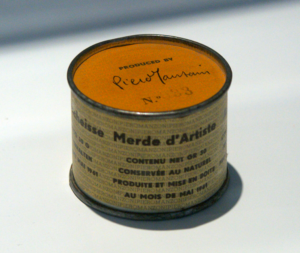
Among the first and most pointed critiques of the role of art as a commodity were Marcel Duchamp’s readymades and Yves Klein’s project of “immaterial pictorial sensibility”. Piero Manzoni’s cheeky sale of sealed cans marked “merda d’artista” (“artist’s shit”) takes it a step further by proposing that everything produced by an artist is an expression of his or her genius and therefore marketable as a commodity. It would only take a small step for the artist-product/collector-consumer model to reach its full consumption.
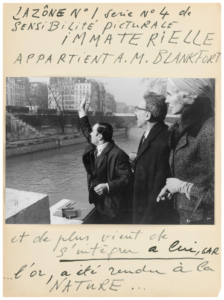 This impermanence of the work of art also leads to the research of Yves KLEIN, Cession of a “zone of immaterial pictorial sensitivity” to Michael Blankfort, Pont au Double, Paris, February 10, 1962.
This impermanence of the work of art also leads to the research of Yves KLEIN, Cession of a “zone of immaterial pictorial sensitivity” to Michael Blankfort, Pont au Double, Paris, February 10, 1962.
“The zones of immaterial pictorial sensibility of Yves Klein le Monochrome are given away for a certain weight of fine gold. There are seven numbered series of immaterial pictorial zones, each comprising ten equally numbered zones. A receipt is issued for each transferred zone, indicating the weight of fine gold, the immaterial value of the acquired immaterial.
Areas are transferable by their owners (see rule established on each receipt).”
In this article we will explore together and in this order: 1) the legal status 2) the tax status according to the “summa divisio” of the tax experts: direct taxes (IPP/ISOC/INR/IPM) and indirect taxes (VAT, inheritance tax,…) and by distinguishing in this second part 3 “typical” taxpayers and moments of taxation:
- The creator of NFTs who is normally the first seller; and
- The NFTs exchange platform; and
- The first buyer of NFT and the following ones(since the blockchain makes possible a complete and unlimited traceability of transactions).
We write these lines with humility, in a world in complete metamorphosis, evolving more and more towards virtual universes that the law, and in particular tax law, struggles to regulate and channel.
In order to guarantee a maximum of legal security, we will apply a maximum of known rules (notably on the art market) to these new artistic assets “mutatis mutandis”, all things being equal, and especially with a permanent will to respect the instructions of the Belgian tax administration.
For us, this is the safest way to advise the players in these new digital worlds, from creators to private or institutional investors, via exchange platforms, while guaranteeing legal security as far as possible.
Sooner or later, legislation will come to articulate our reflections in an expected but still non-existent framework. Our most beautiful reward will be to have humbly contributed to the reflection and filled a current legal vacuum which the law – in particular tax law – abhors.




